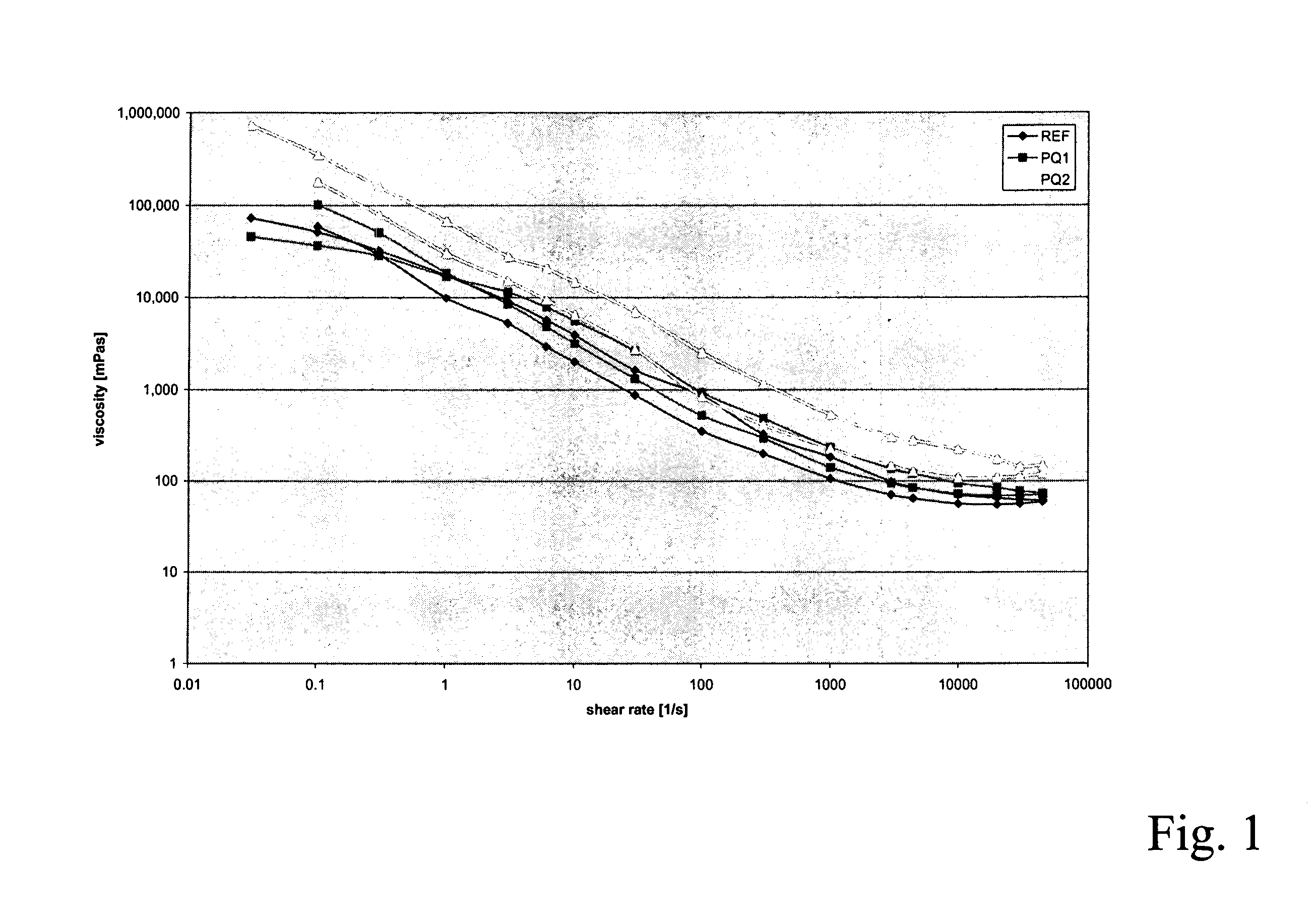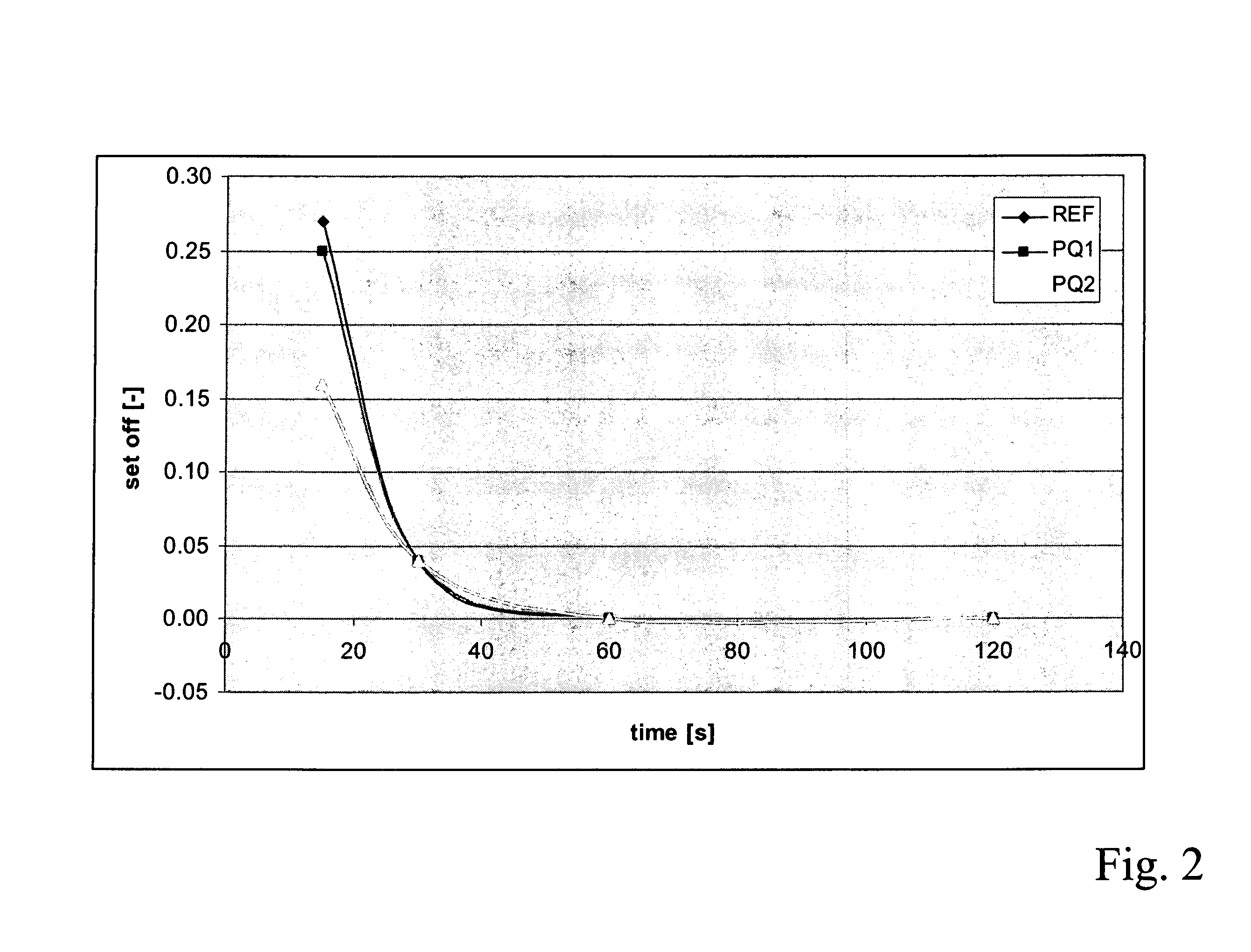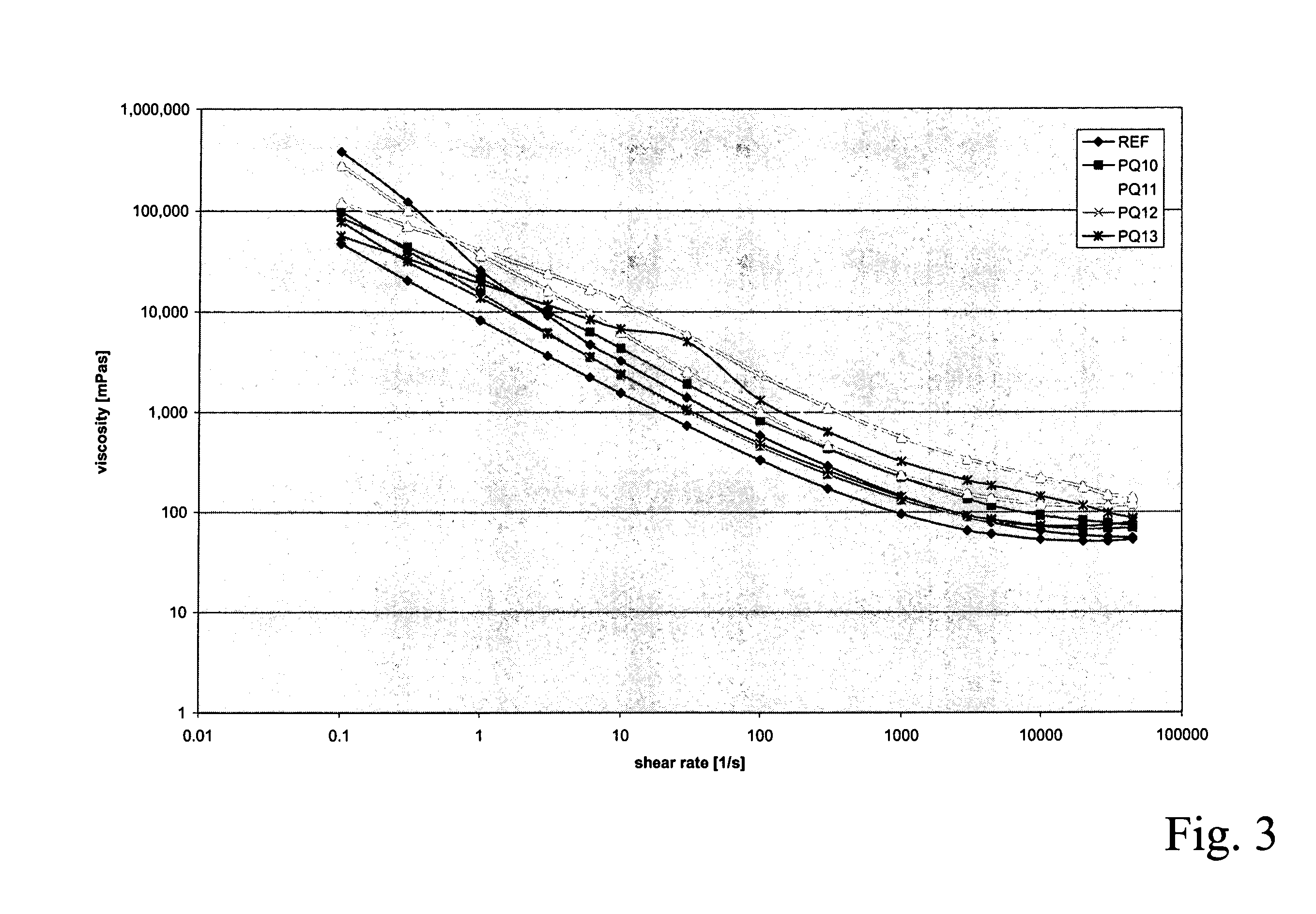Paper for offset printing
- Summary
- Abstract
- Description
- Claims
- Application Information
AI Technical Summary
Benefits of technology
Problems solved by technology
Method used
Image
Examples
Embodiment Construction
[0039]With today's increasing crude oil prices, organic (latex) binders have become a major cost entry for coating formulations and end paper cost prices. Furthermore there are severe environmental concerns associated with the use of these synthetic organic binders.
[0040]Therefore possibilities to substitute latex for a less expensive and more sustainable alternative are looked for. Such alternative should of course perform equally well. In addition the new substance is preferably subject to sustainable development with the ever more strict regulations concerning environmentally friendly and safe production of materials.
[0041]One material unexpectedly efficiently fulfilling these demands and currently object of this document is soluble sodium silicate.
[0042]Soluble silicates are one of the oldest and most benign industrial chemicals. Sodium silicates are manufactured by fusing sand (SiO2) with sodium carbonate (Na2CO3) at 1200° C. The resulting glass can be dissolved with high press...
PUM
| Property | Measurement | Unit |
|---|---|---|
| Temperature | aaaaa | aaaaa |
| Length | aaaaa | aaaaa |
| Length | aaaaa | aaaaa |
Abstract
Description
Claims
Application Information
 Login to View More
Login to View More - R&D
- Intellectual Property
- Life Sciences
- Materials
- Tech Scout
- Unparalleled Data Quality
- Higher Quality Content
- 60% Fewer Hallucinations
Browse by: Latest US Patents, China's latest patents, Technical Efficacy Thesaurus, Application Domain, Technology Topic, Popular Technical Reports.
© 2025 PatSnap. All rights reserved.Legal|Privacy policy|Modern Slavery Act Transparency Statement|Sitemap|About US| Contact US: help@patsnap.com



